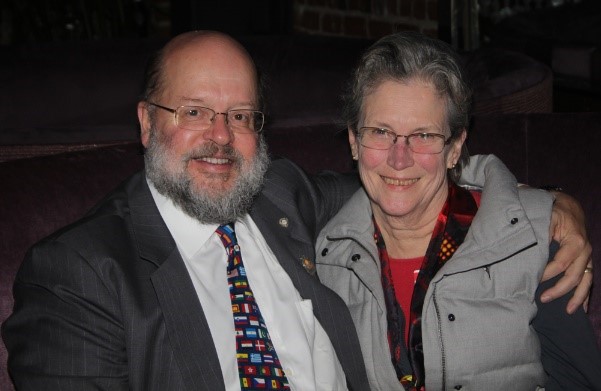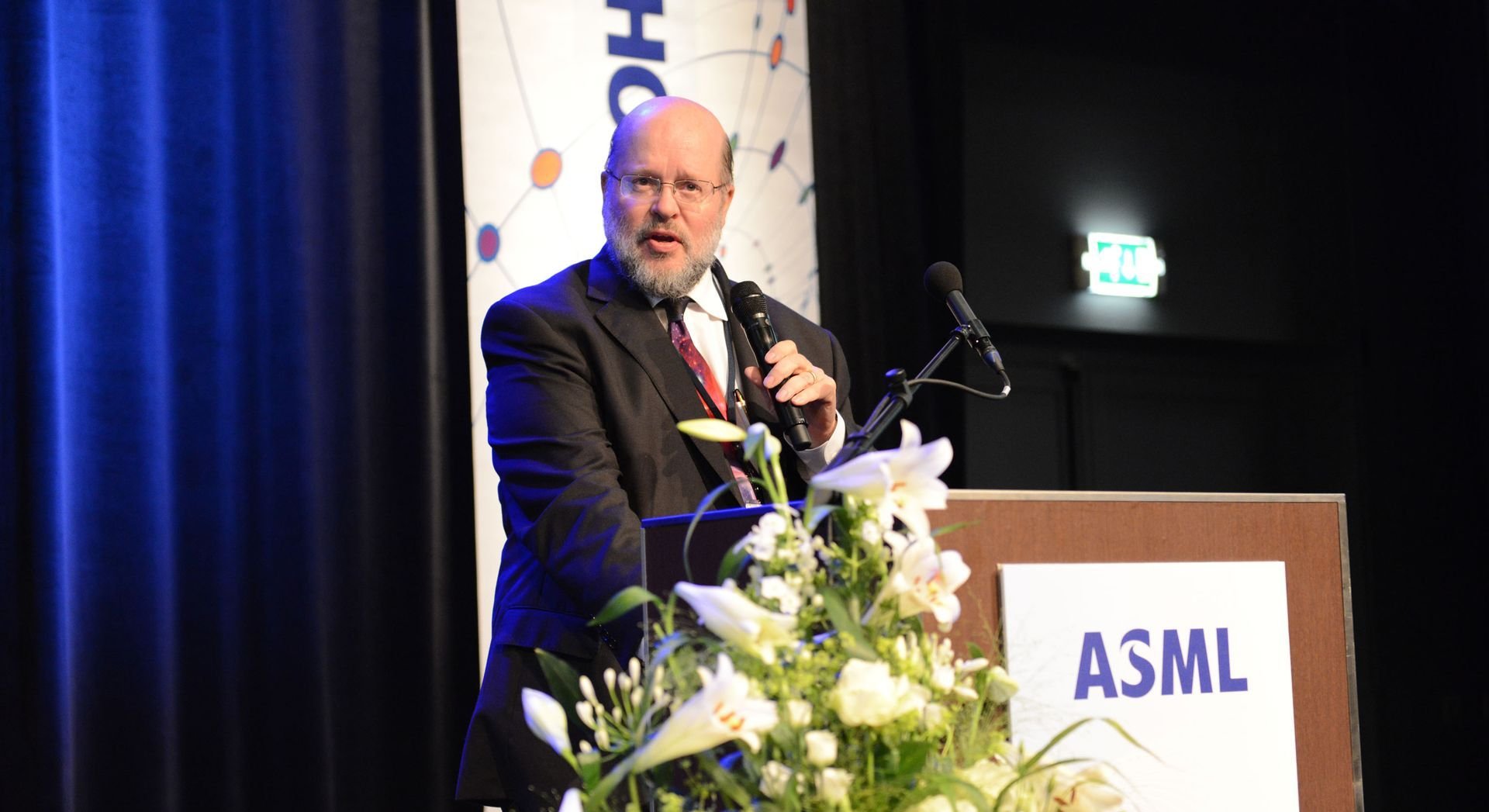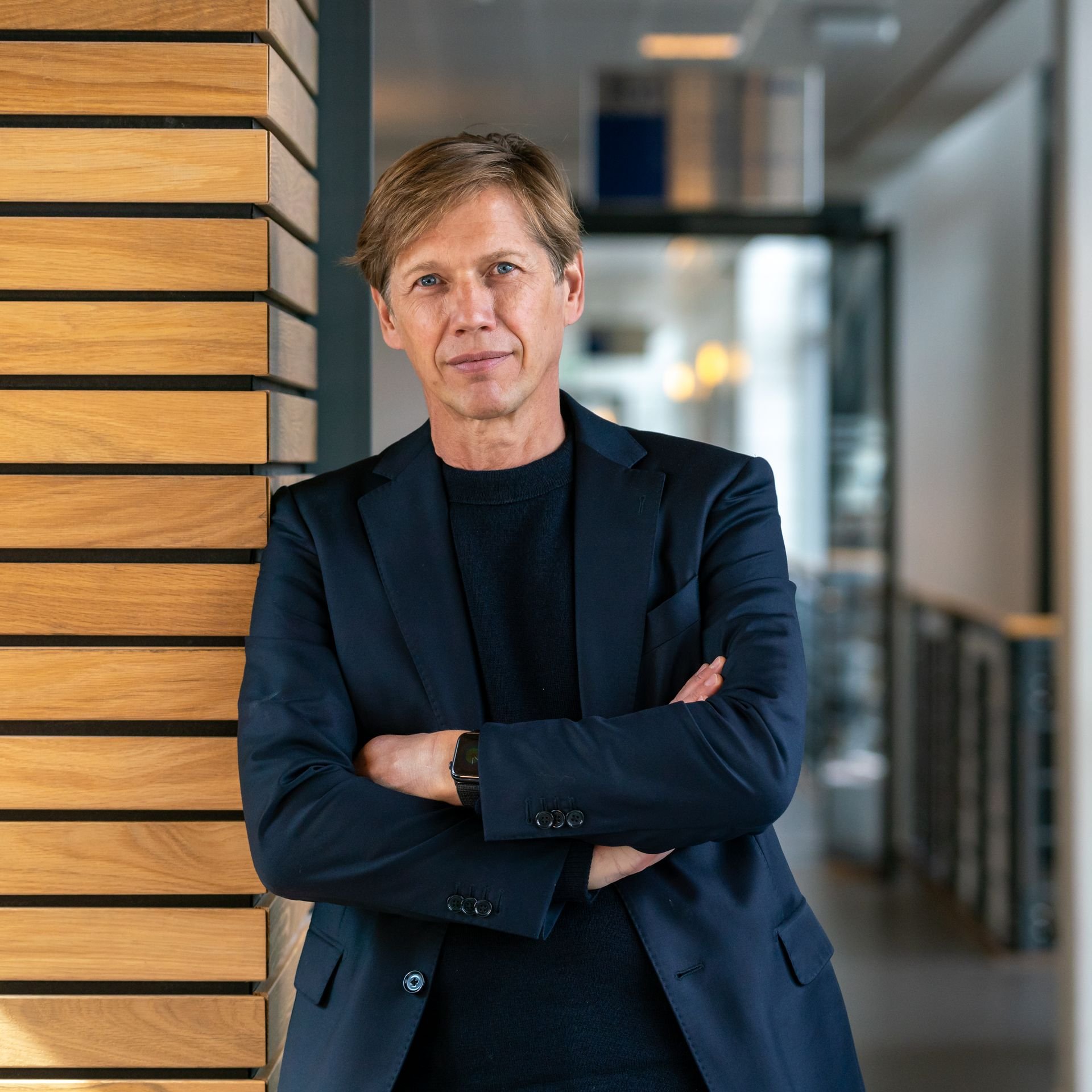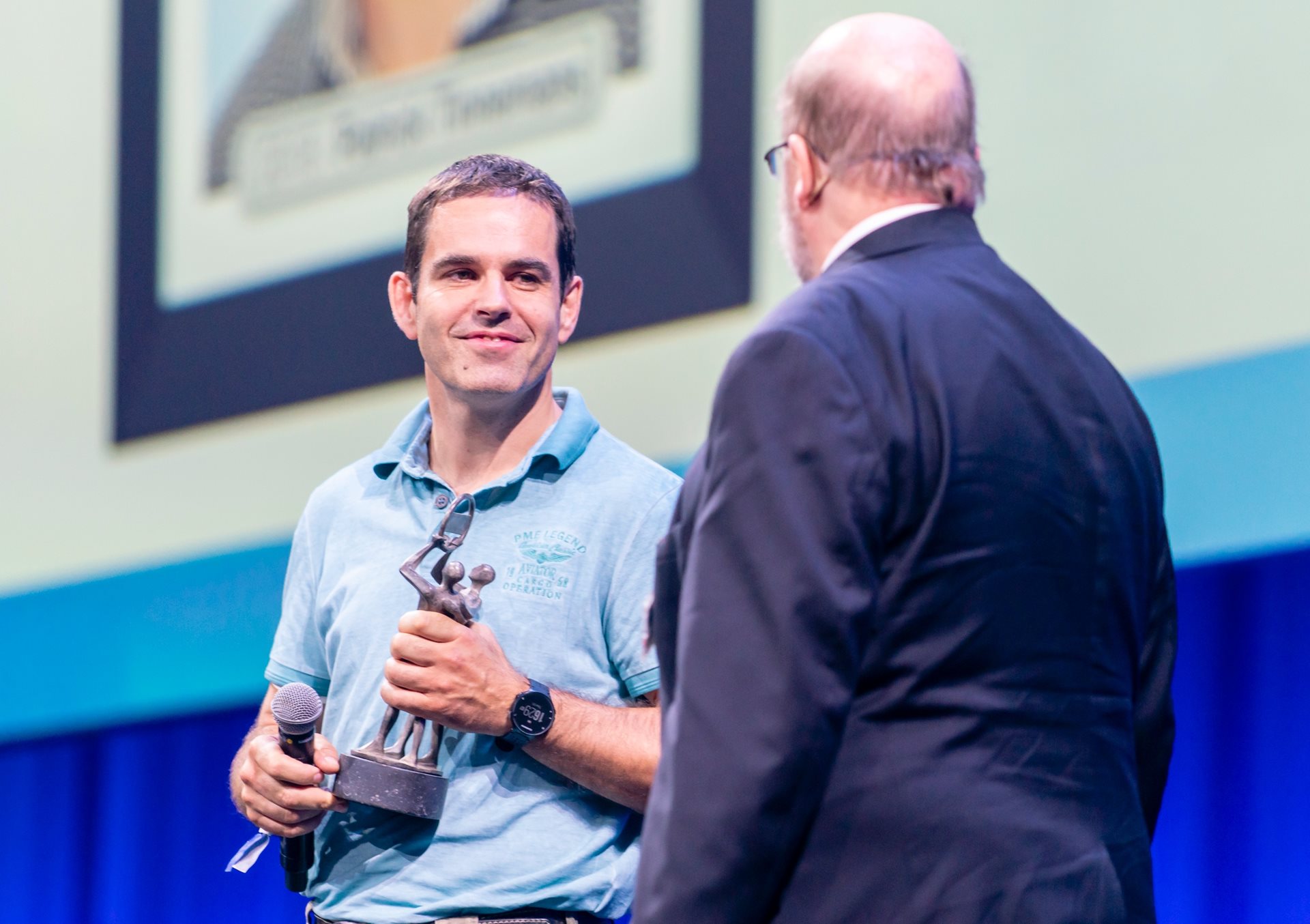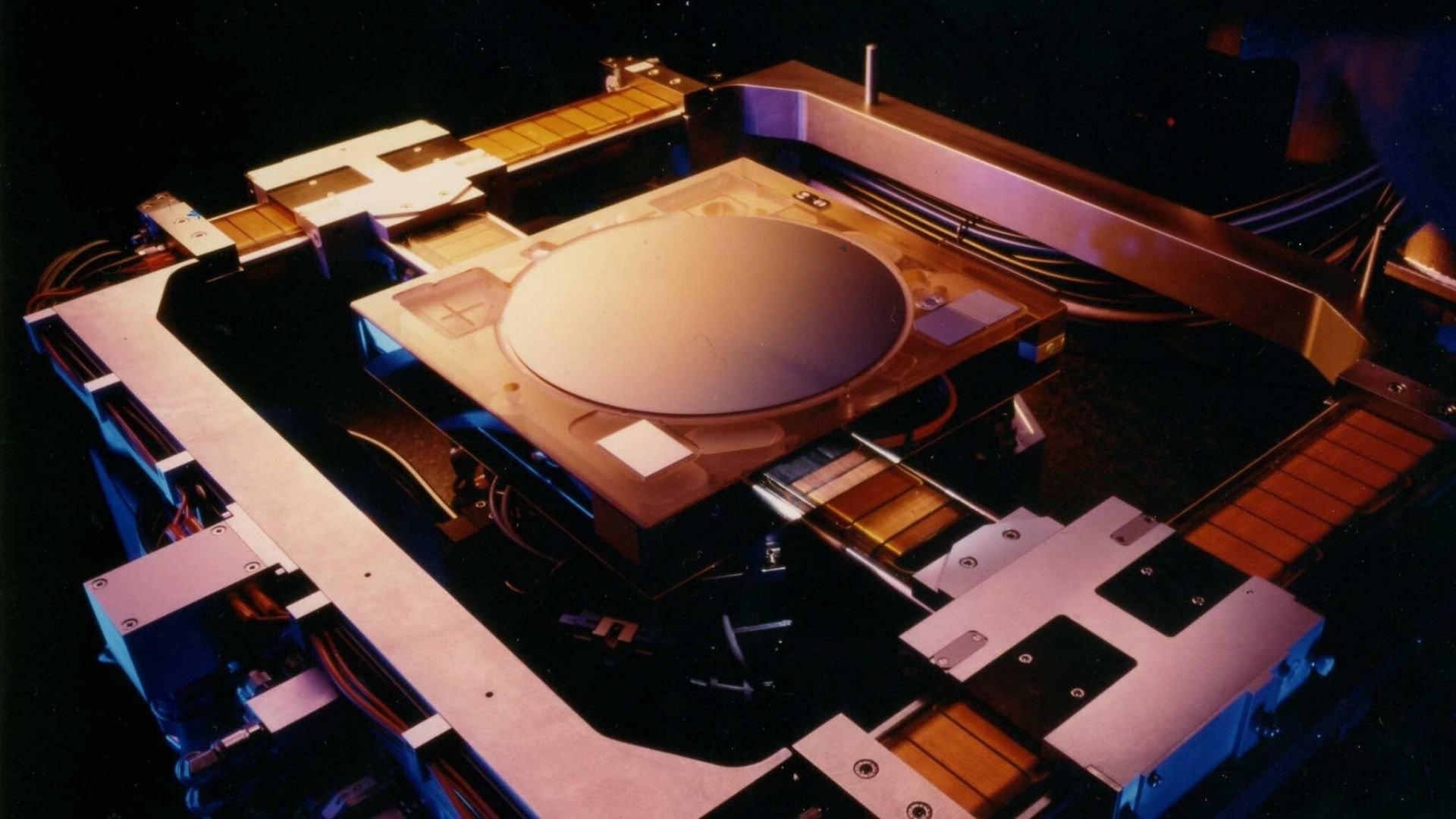5-minute read - by Lucas van Grinsven, January 7, 2021
Why some startups fail and others succeed is not only the result of great strategy and execution, but also dumb luck and the kindness of strangers. The fact that ASML exists today is in part due to a man – one who radiated kindness and generosity as well as brilliance and clarity of mind.
As manager of VLSI lithography development at microprocessor maker Advanced Micro Devices (AMD), William (‘Bill’) Arnold gave up-and-coming ASML a shot to prove itself in the latter half of the 1980s by helping ASML obtain its first orders by an important external customer.
But he did more than just that. Bill also tutored and educated the eager yet inexperienced team from the Netherlands.
“At the time, ASML frankly had no idea what a good stepper was supposed to do. Over all the years at AMD, Bill believed in us and spent significant time with us,” recalls ASML president and Chief Technology Officer Martin van den Brink. “He taught us how to make lithography work in the fab. Without this education, ASML would not have become successful. Without the initial orders from AMD with Bill’s support, ASML would not have continued to exist.”
Bill worked hard to convince the AMD management team to accept the young Dutch startup. Although Bill had only joined AMD in 1980, shortly after obtaining his MSc in physics from the University of Chicago, he had already made a name for himself in the field of lithography by the mid-1980s.
“At AMD, he blended theoretical understanding of imaging with the practical know-how of getting things done in manufacturing,” says scientist and industry watcher Chris Mack on his Lithoguru site.
One of the people that needed convincing was Bill Siegle, AMD’s then-new R&D manager in the early 1990s. Bill Arnold was chaperoning this new Bill to Veldhoven in 1991, who was checking on ASML’s claims of building a superior 200 mm wafer stepper concept. Fresh from IBM, Bill Siegle carried with him bad memories of poorly performing lithography tools from Perkin Elmer and GCA.
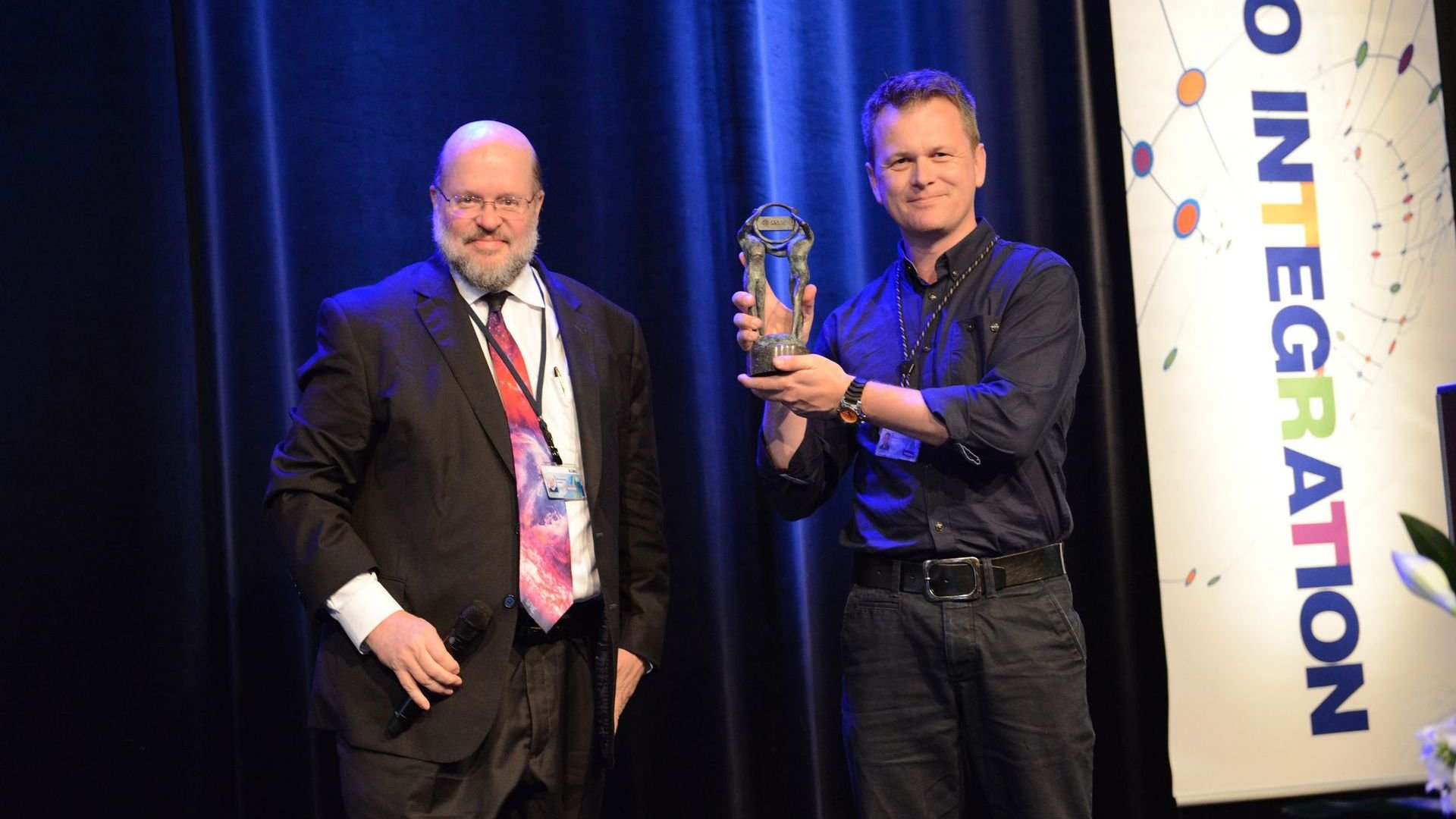
“Every question Bill Siegle asked me, I argued on the spot as to be ‘not a problem,’” Martin van den Brink recalls. “When traveling back, as Bill Arnold shared with me later, Bill Siegle did not trust my claims and he considered me ‘unbelievably arrogant.’”
Bill Arnold had to smooth things over and defend his choice for ASML. He succeeded in convincing Bill Siegle, and AMD ended up with the new 200 mm tools from ASML. It was a major windfall, because ASML was nearly bankrupt due to lack of sales.
Years later, in December 1996, ASML CEO Willem Maris and Martin van den Brink were invited to present their roadmap to AMD management after a tiring trip around the world. During the meeting, Bill inquired where 193 nm was on ASML’s roadmap. The ASML team curtly responded that there was no 193 nm (ArF) program, because it provided only a marginal benefit relative to 248 nm (KrF).
Some months later, during SPIE 1997, Bill confided to ASML that they had given the wrong answer – AMD had ordered a competitive system from SVG, since ASML did not have a 193 nm program. A heated discussion erupted among the handful of ASML engineers, all with Bill Arnold in attendance. A few days later, on an early Monday morning, ASML chief scientist Steef Wittekoek and Martin van den Brink presented ASML’s own 193 nm program, which they had hammered together over the weekend in Lake Tahoe, to Bill Arnold and Bill Siegle. Bill Siegle was skeptical but agreed to see if ASML could execute it. Just six months later, ASML passed a number of critical milestones, and AMD cancelled the SVG order. Two years later, AMD was the world’s first chipmaker with 193 nm technology.
“If it weren’t for Bill’s intervention, ASML would likely not have made the right choice. Even today, ArF is the primary platform for volume manufacturing,” Van den Brink says.
In 1998, Bill Arnold joined ASML in Veldhoven as the new chief scientist, replacing Steef Wittekoek, who had just retired. In this role, he was responsible for guiding lithography product developments so that the long-term requirements of semiconductor device manufacturers were met.
In 2001, Bill Arnold moved back to the US to start, lead and shape ASML’s Technology Development Center (TDC) in Tempe, Arizona. TDC works with ASML’s customers to develop next-generation lithography processes. He was able to attract several world-renowned specialists to join the TDC, including Donis Flagello, Mircea Dusa and Bob Socha. He continued in this position until his retirement in 2019.
“Bill provided important insights on how litho was being used by our customers, and he was instrumental in defining our ‘holistic’ litho strategy and Applications business,” says Jos Benschop, ASML senior vice president of Technology. “But most of all, we will remember him as a wise and caring person.”
Another lasting legacy of Bill is ASML’s Fellow program. As chief scientist and head of the TDC, Bill knew that science and engineering were at the heart of ASML, but the company lacked a system of recognizing and rewarding excellence – other than promoting its best engineers into senior management positions, a career path that would often take these engineers away from the science.
Thanks to Bill, every June since 2000 at the ASML Technology Conference, ASML names one or two of its brightest minds as a Fellow. Fellows are promoted into a senior job without the distraction of managerial responsibilities. They continue their scientific explorations and set an example as they coach and encourage the next generation of brilliant young ASML engineers.
Bill himself was perhaps the best example that the curious mind never rests. He continued to study new technologies, such as artificial intelligence and quantum computing, and their potential impact on ASML. He stayed involved even after his retirement and reported on emerging technologies to ASML’s Supervisory Board Technology Committee as recently as September 2019.
Bill was also president of SPIE, the international society for optics and photonics, in 2013.
Across the lithography and SPIE communities, [Bill] was known and very much appreciated for his friendly, personable, smart, and down-to-earth approach,” SPIE wrote in its In Memoriam.
People who have had the pleasure to work with Bill were impressed by his honest and straightforward attitude. He was greatly respected as a technologist, manager, colleague and friend.
"Bill certainly had a significant impact on SPIE and the lithography community," says 2020 SPIE president John Greivenkamp. "But what I will always remember about Bill is that he was simply one of the nicest people I have ever met."
Bill Arnold passed away on December 27, 2020. Bill’s family is asking that any memorial donations be made to Doctors Without Borders.
